The orizuru (折鶴 ori- “folded,” tsuru “crane”), or paper crane, is a design that is considered to be the most classic of all Japanese origami. The crane is a traditional origami figure, auspicious in Japanese culture. Legend says that anyone who folds one thousand paper cranes will have their heart’s desire come true.
For those of us who love and practice origami, the paper crane is symbolic of paper folding as well. Many people have crossed over into the magic and meditative world of origami thanks to having learned how to fold a crane.
Here is an updated and easy step-by-step video tutorial to make the origami crane. Share it with people who want to learn how to make this classic paper crane.
Twelve Fun Facts about the Origami Crane
1- Origami Crane -Fun Fact One The paper crane is a representation of the Japanese red-crowned crane, referred to as the “Honourable Lord Crane” in Japanese culture. In addition to the red-crowned crane there are fourteen other crane species. Cranes are very large birds, often considered the world’s tallest flying birds.
Cranes are perennially monogamous breeders, establishing long-term pair bonds that may last the lifetime of the birds. This symbolism of fidelity and longevity has made origami cranes a lovely way to decorate wedding parties.

2- Origami Crane -Fun Fact Two Senbazuru Orikata (“Secret to Folding One-thousand Cranes”) published in Japan in 1797 is the first known book on origami. The book was written by Roko-an, a psuedonym for Gido (1762-1837) who was the head priest of Choen-ji Temple in Seiyou Kyuka, now known as Kuwana.
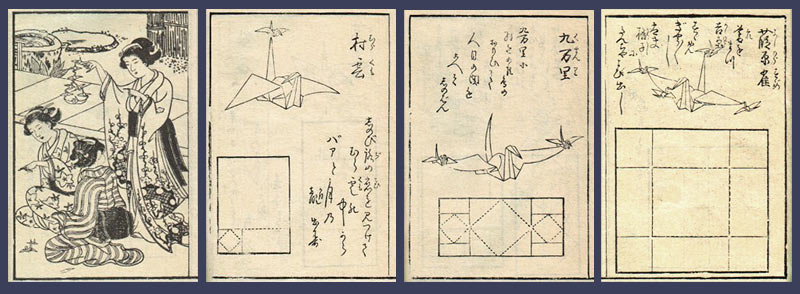
3- Origami Crane -Fun Fact Three The term renzuru (連鶴, “conjoined cranes”) refers to an origami technique whereby one folds multiple cranes from a single sheet of paper (usually square), employing a number of strategic cuts.
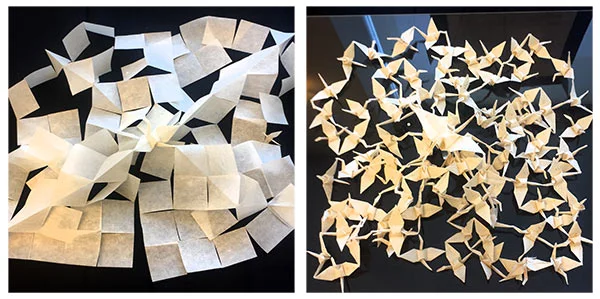
4- Origami Crane -Fun Fact Four The origami crane (折鶴 orizuru in Japanese) has become a symbol of peace because of a Japanese girl named Sadako Sasaki. Sadako was exposed to the radiation of the atomic bombing of Hiroshima as an infant. As a consequence, by the time she was twelve in 1955, she was dying of leukemia. You can read Sadako’s story in the book The Complete Story of Sadako Sasaki (affiliate link)
Sadako’s courage throughout her illness inspired family and friends, and she became a symbol of people who suffer from the impact of war. Her life and her death carry a message: We must have a wholehearted desire for peace and be willing to work together to achieve it.
5- Origami Crane -Fun Fact Five The largest origami paper crane has a wingspan of 81.94 m (268 ft 9 in) and was created by 800 people of the Peace Piece Project (all Japan) at the Hiroshima Shudo University, Hiroshima, Japan, on 29 August 2009.
6- Origami Crane -Fun Fact Six A microscopic crane was folded from a square 1 mm by 1 mm, using a microscope and sewing needle by Assistant Professor Watanabe at Nigata University, Japan.
(source: British Origami, No. 119, page 22)
7- Origami Crane -Fun Fact Seven The fastest time to make 100 origami cranes is 40 minutes 35 seconds and was achieved by Yoneyama Yuichi (Japan) at Nishi Yogo special public school in Nagoya, Japan, on 30 November 2010. That’s an average of 24.35 seconds for each crane.
8- Origami Crane -Fun Fact Eight Bonnie Tarses of WeavingSpirit has made over twenty (20) sets of one thousand cranes since 2015, which she has gifted to different people as a symbol of friendship and soul healing. Bonnie designs and displays her cranes in a way reminiscent of her beautiful weaving work.
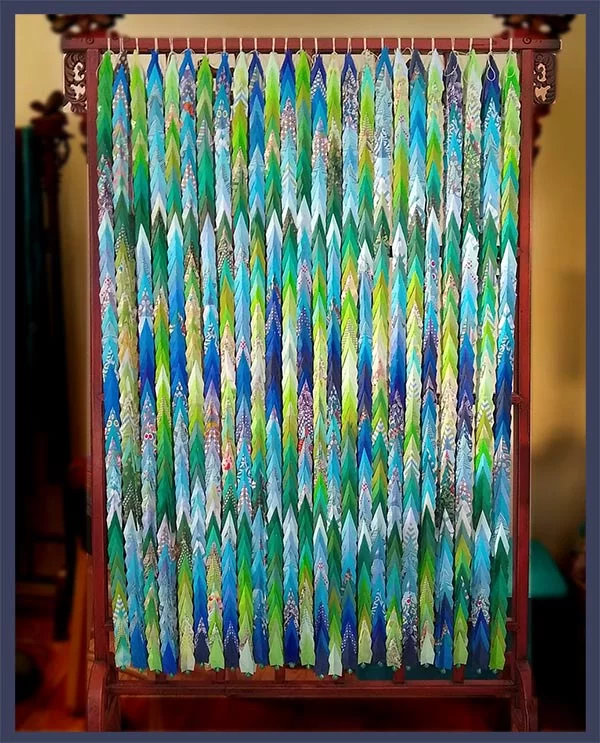
9- Origami Crane -Fun Fact Nine You can play with your food and make your own cheese-stuffed edible origami crane rangoons for your party as demonstrated by Joy Huang (@joyosity) in her cooking blog.
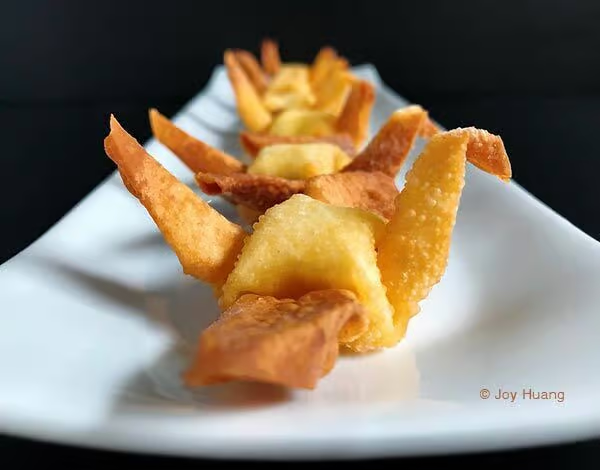
10- Origami Crane -Fun Fact Ten David Kawai @teenytinyorigami is folding 1,000 tiny origami cranes.
He starts with a 5-6mm square and does not use tools other than his fingers.
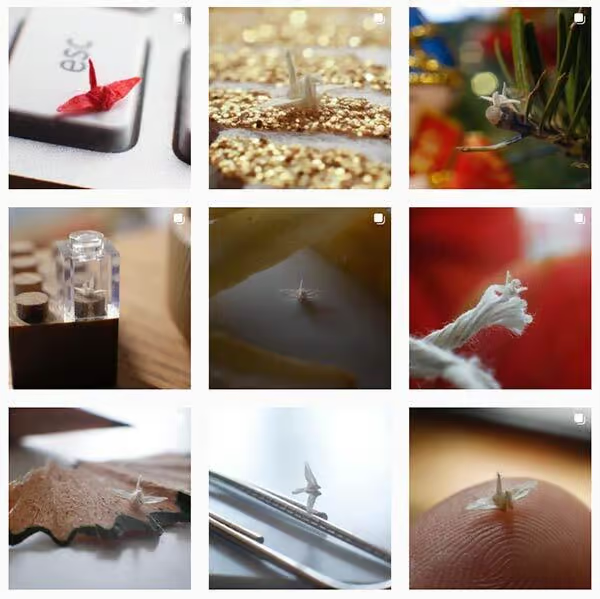
11- Origami Crane -Fun Fact Eleven Naoki Onogawa @naokionogawa uses tiny origami cranes to create the illusion of foliage in miniature trees.
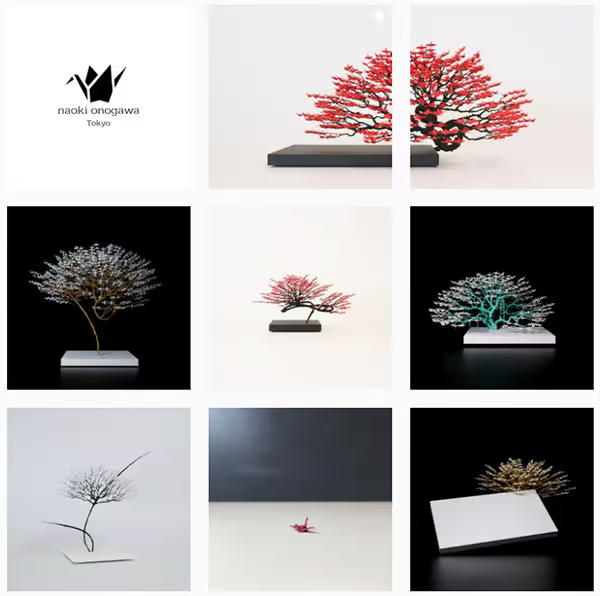
12- Origami Crane -Fun Fact Twelve Cristian Marianciuc @icarus.mid.air has developed several collections of more than a thousand decorated origami cranes. His work is unique and inspiring! Read the interview with Cristian HERE.
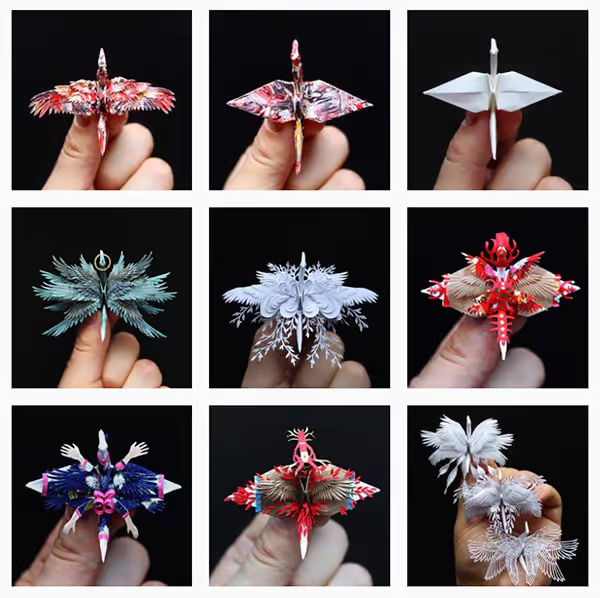
Check our tutorial on How to make a Stay-Home Origami Crane
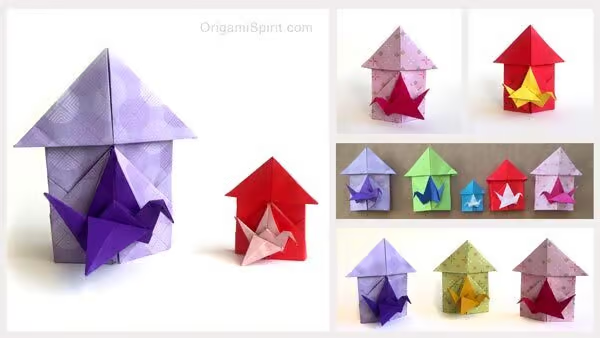




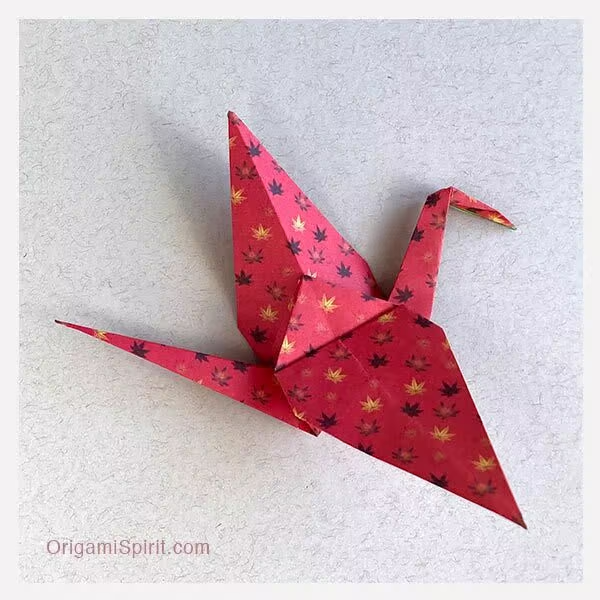

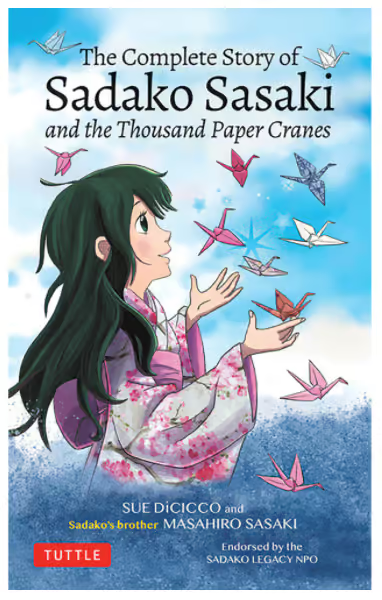
Thank for sharing enjoyed reading the info..
You are welcome Maxine. I’m glad you enjoyed it!
Cara Leyla,
amo la profondità del tuo approccio! sono innamorata dell’origami da circa quarant’anni e il mio sentimento è molto vicino al tuo.
Grazie grazie grazie
Cara Eliana
Sono molto felice che tu ami l’origami e ti senti così vicina allo spirito di ciò che condividiamo su questo sito. Grazie!
Amazing! I enjoy making cranes. My first models were cranes. The small ones make my heart skip a beat ☺️☺️
THANK YOU for sharing this information. ❤️
Muito obrigada por tanta informação!! Amei!!😍🙋🏻♀️
Com muito prazer!
¡¡¡¡FANTÁSTICO!!!!!!! MUCHAS GRACIAS LEYLA POR AMPLIAR NUSTRA CULTURA SOBRE ESE
HERMOSO PÁJARO DE ORIENTE,TAMBIÉN DICEN QUE VUELA MUY ALTO, TAN ALTO QUE SE PIERDE DE VISTA EN EL CIELO. YO NO ME IMAGINO COMO PUEDO VER UNA GRULLA DE UN ,MILÍMETRO , ES UNA MORONITA, MÁS PEQUEÑA QUE UN GRANITO DE AZÚCAR, ¡¡¡¡INCREÍBLE!!!! GRACIAS, GRACIAS
.
Me alegra que te guste Haydée
Thanks for the wonderful 12 facts about the origami crane!
You are welcome, Leanne. I’m happy you enjoyed it!